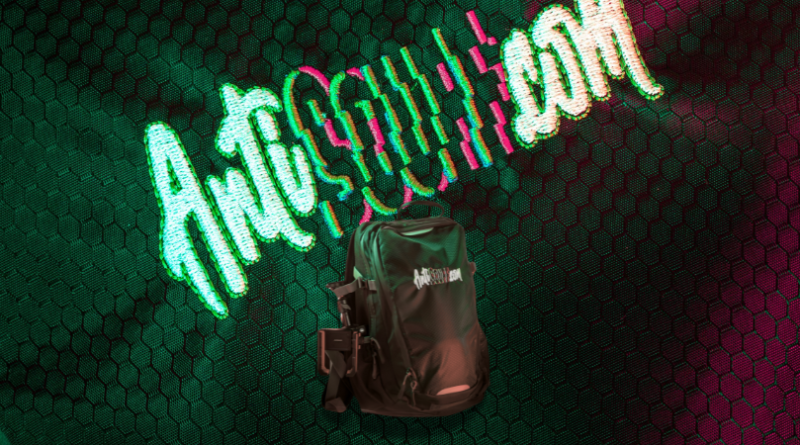AntiScuff IRL Streaming Backpack
AntiScuff IRL Streaming Backpacks: Comprehensive Overview and Comparison
AntiScuff IRL Streaming Backpack is a fully assembled, all-in-one mobile live streaming solution designed for creators who want to broadcast from anywhere. This backpack comes preconfigured with everything needed to go live outdoors – you simply add a camera and insert your own data SIM cards. Built by streamers for streamers, the AntiScuff pack emphasizes durability, ease of use, and high-performance broadcasting. In this article, we’ll explore the features and specifications of AntiScuff’s IRL backpack, discuss its target use cases, and compare it with similar products from Elgato, LiveU, and the popular “Gunrun” backpack to see how they stack up in technology, customization, portability, and performance.
Table of Contents: AntiScuff IRL Streaming Backpack
AntiScuff IRL Streaming Backpack Overview
AntiScuff currently offers a flagship model: the AntiScuff IRL Backpack for Streamers. Rather than a range of different models, this single backpack platform is customizable via add-ons. The base package (starting at roughly £999 or $1250) includes the core backpack with its integrated streaming hardware and essential accessories. AntiScuff’s approach means every user gets the same proven core system, and you can tailor the configuration with optional components to suit your needs. This contrasts with other vendors that might have separate “basic” and “pro” models – here, AntiScuff provides one powerful backpack and lets the customer choose extras like additional batteries, modems, or a camera. The result is a streaming backpack built on reliable technology (the BELABOX encoder), offering a plug-and-play experience for high-quality IRL streaming.
Technical Foundation: At the heart of the AntiScuff backpack is the BELABOX system – an open-source bonded encoder built on single-board computer hardware (such as an NVIDIA Jetson Nano or Orange Pi board). This onboard computer encodes your video (with efficient H.265/HEVC compression) and bonds multiple network connections for a stable stream. The backpack’s internal encoder can accept any camera with an HDMI output. AntiScuff often recommends the Sony FDR-X3000 action camera for its reliability and popularity among streamers, and they offer it as an add-on, but users are free to use DSLRs, mirrorless cameras, or other HDMI-capable cameras as well. The video feed from the camera is sent to the BELABOX encoder in the backpack, which then streams it out over the available internet connections. This means the AntiScuff backpack is capable of full HD 1080p streaming (and potentially higher with certain hardware) at smooth framerates, suitable for platforms like Twitch, YouTube, or Facebook Live. All the necessary high-quality cables (robust UGREEN braided cables) are included and pre-wired, so setup is minimal – essentially, you plug in your camera and turn on the system.
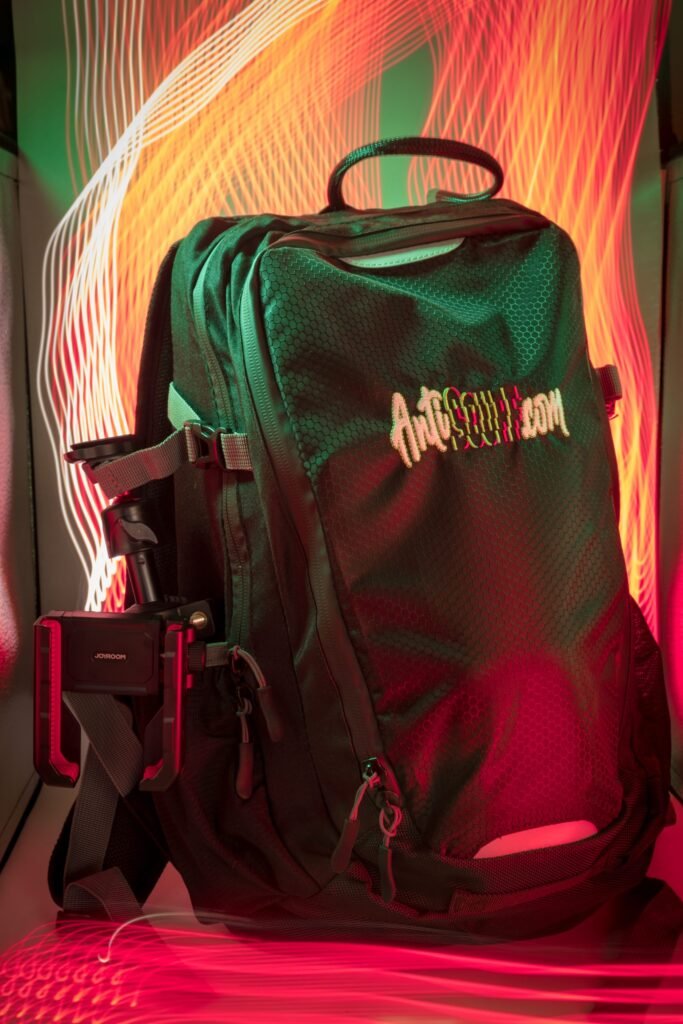
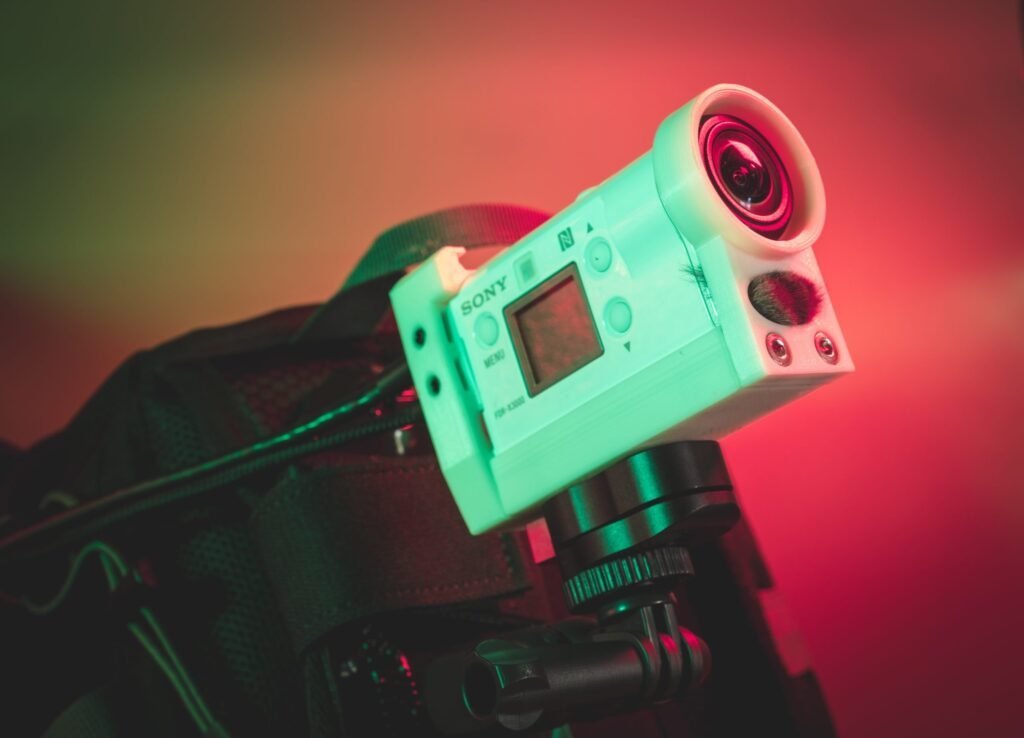
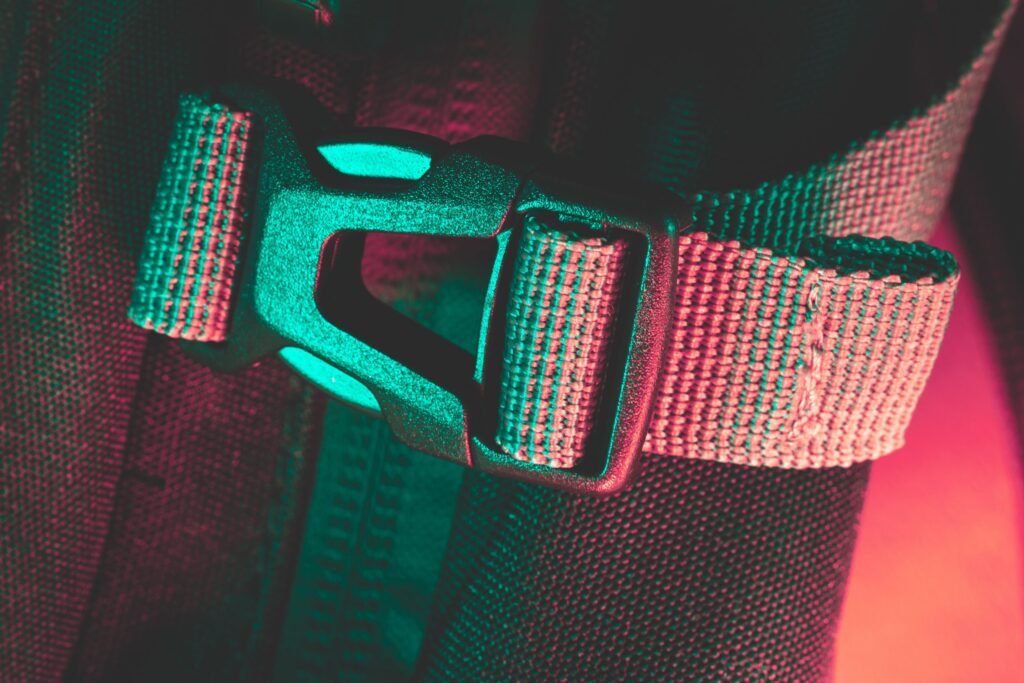
Design and Durability
One of AntiScuff’s key selling points is the rugged yet comfortable design of its streaming backpack. The backpack itself is a high-quality, weather-resistant camera bag that has been customized for this system. It features a fully rainproof construction – all seams and zippers are designed to keep water out, so streamers can confidently broadcast in rain or snow without worrying about the electronics. Internally, there are padded compartments that securely hold the equipment (the encoder, modems, batteries, etc.), protecting them from shocks or sudden movements. An important benefit of this design is that all the sensitive gear is stored out of sight: to onlookers, it’s just a regular backpack. This not only shields the equipment from dust or drizzle, but also adds a layer of security against theft or tampering when in a public space. A thief would have to undo multiple zippers and get through padding to even access the devices, which is impractical while the bag is being worn, thereby deterring pickpocketing.
Comfort is crucial for long IRL streaming sessions, and AntiScuff addresses this with ergonomic features. The backpack comes with wide, double-padded shoulder straps that distribute weight evenly and won’t dig into your shoulders. It also has an adjustable sternum (chest) strap and a waist (hip) strap. These help shift the load off your shoulders and onto your torso and hips, making it much more comfortable to wear the pack for hours. Streamers who walk around a city or hike a trail while live will appreciate that the bag stays snug and balanced, reducing fatigue. Even the shoulder straps have soft cushioning on the inside, preventing irritation during hot weather or when worn for a long duration. All these design elements mean the AntiScuff backpack is optimized for extended wear, allowing streamers to focus on their content rather than discomfort.
In terms of form factor, the AntiScuff IRL Backpack is fairly compact considering what it carries. It’s meant to fit within airline carry-on size limits – it can slide into overhead luggage compartments on planes – which is important for traveling streamers who fly to different events or countries. The layout of pockets and pouches is also thoughtfully done: there are numerous pockets to organize gear. Streamers can stow extra batteries, lenses, cables, personal items, and even a small tablet or chat monitor. The kit also includes external mounting points for accessories. For example, a sturdy Ulanzi tripod/selfie-stick comes with the backpack and can be attached to the side. This doubling as a selfie stick means you have a collapsible monopod to hold the camera when you want handheld shots or to set the camera down for a static angle. On top of that, a “chat phone” holder is integrated into the tripod so you can mount a smartphone on the rig – this is commonly used to monitor chat or alerts while streaming. Additionally, AntiScuff provides a Stuntman shoulder mount in the package. This is a harness piece that you can strap to your chest or shoulder and mount the camera on, giving a stable first-person perspective (almost like a bodycam view) without using your hands. All these accessories are built to handle outdoor conditions (the tripod is waterproof, mounts are secure and robust), aligning with the backpack’s durable ethos.
Cooling and thermal management have been addressed in the design as well. Live streaming encoders and multiple modems can generate a fair bit of heat inside a closed space. The AntiScuff backpack includes an active cooling system – essentially small fans or ventilation that circulates air within the backpack’s electronics compartment. This ensures that even if you’re streaming in the heat of summer or under direct sun, the hardware stays within safe temperature ranges. Overheating can wreak havoc on a live broadcast (causing shutdowns or throttling), so this cooling system adds reliability for long streams. Despite the fans and hardware, users report that the noise is minimal; the stream’s microphone won’t pick up loud whirring, and the backpack remains quiet during operation.
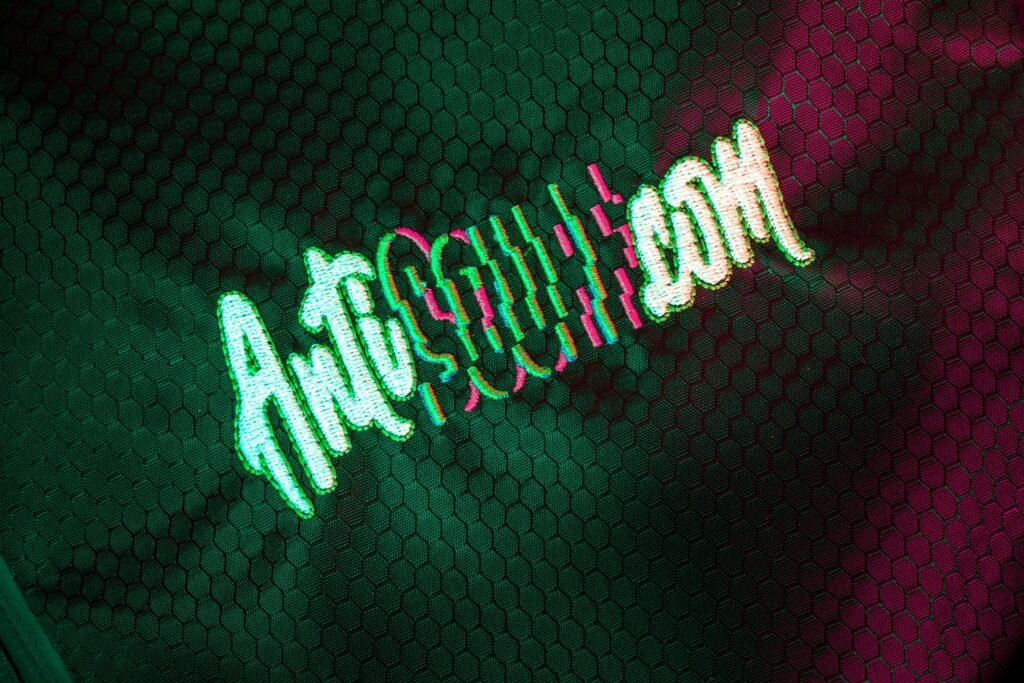
Power and Connectivity Features
For any mobile broadcasting setup, battery life and connectivity are lifelines. The AntiScuff IRL Backpack is equipped with a powerful rechargeable battery system to keep the stream running for many hours. The standard configuration includes a 20,000 mAh power bank (INIU brand), which provides approximately 6 to 10 hours of continuous streaming on a single charge. The exact duration depends on factors like how many devices are powered (number of modems, whether you’re powering the camera from the pack, etc.) and the streaming bitrate, but ~6+ hours of uptime is a typical baseline with one battery. Since this backpack uses USB-based power banks, it’s relatively easy to add more batteries for longer sessions: AntiScuff allows expansion with additional power banks. In fact, they offer a “Power & Connectivity Bundle” option that includes three extra 20,000 mAh power banks (and additional modems) at a discounted rate. By adding more batteries and swapping them when depleted, a streamer could effectively stream all day. The power banks are hot-swappable in the sense that you can have multiple hooked up and you can unplug one to charge it (perhaps via a portable charger or outlet) while the others keep the system going. This modular battery approach is very practical compared to a single large proprietary battery – you can always carry spare common power banks. The battery pack included (20 Ah at 5V) is under the 100 Wh airline limit, making it travel-friendly, and any additional banks would also need to comply individually with those limits.
On the connectivity side, the AntiScuff backpack is built for robust internet connections. It supports bonded cellular and Wi-Fi connectivity, meaning it can utilize multiple networks at once to ensure a stable upload. In practice, the BELABOX encoder inside can connect to up to three or more mobile networks simultaneously (for example, using USB cellular modems and Wi-Fi tethering together). AntiScuff gives buyers the choice to include USB cellular modems in their order – these are the devices that take a SIM card and provide internet access via 4G or 5G. The base backpack doesn’t force you to buy modems (some streamers may already have their own or might start with a single connection via phone tethering), but it’s designed to accommodate several. You can add on 4G/5G modems (the optional bundle comes with two) that plug into the backpack’s internal USB hub. Each modem can be on a different carrier, which greatly improves coverage (if one carrier has poor signal in an area, another might have better signal). The BELABOX bonding software will combine the bandwidth of all active connections and also intelligently handle failover (if one connection weakens or drops, the other connections maintain the stream). This results in far fewer disconnects or buffering issues, even while moving through varying network conditions – a critical feature for IRL streamers who might walk from city streets to subway tunnels and not want their stream to cut out.
If a user prefers not to use USB modems, the system can rely on a Wi-Fi connection – for instance, you could tether the backpack to a smartphone hotspot or a pocket Wi-Fi router. To facilitate that, AntiScuff offers an optional Wi-Fi access point accessory. This is essentially a dedicated wireless router unit that can be powered from the backpack and create a local Wi-Fi network for things like your streaming PC or to tether your chat phone without draining its battery. But even out of the box, the BELABOX board itself usually has Wi-Fi capability built-in or via a dongle, so you can tether it to your phone’s hotspot without needing an extra device if you choose. The key is flexibility: some streamers in remote areas might have one very good 5G phone plan and opt to tether off that, whereas others in metropolitan areas might prefer to run three USB modems from different carriers. AntiScuff’s backpack supports both approaches.
It should be noted that AntiScuff does not include SIM cards or data plans with the backpack – and intentionally so. They advise streamers to acquire local or regional data SIMs on their own, because it’s usually more cost-effective and offers better coverage to use local cellular providers wherever you stream. This means the user has control over their data subscriptions and can avoid the markup of a reseller’s global data plan. The backpack will work with any standard SIM; as long as you have an active data plan and insert the SIM into a USB modem or phone for tethering, the system can use it. This approach differs from some competitors that bundle proprietary SIMs or global plans – with AntiScuff, the philosophy is that you only pay for the data you need and can take advantage of cheap local data (for example, buying an unlimited local SIM when traveling to another country rather than paying roaming fees or expensive global SIM rates).
In terms of broadcasting capabilities, once connected to the internet, the AntiScuff backpack streams using the SRT (Secure Reliable Transport) protocol or RTMP to send video to a server. AntiScuff provides integration with their Cloud OBS Hosting service for this purpose. In fact, as a bonus, each purchase currently includes six months of free OBS Cloud Remote Desktop service. This means the streamer gets access to a cloud-based OBS instance where their stream is received and then forwarded to the final platform (Twitch, YouTube, etc.). The advantage of using a cloud OBS or relay server is that it handles the bonded stream coming from the backpack and can also manage advanced features like overlays, scene switching, or multi-streaming to several platforms. With AntiScuff’s cloud OBS, a user can even send one stream from the backpack and have the cloud duplicate it to two or more sites (with the enhanced package, they mention up to 2 simultaneous outputs, and with a higher tier, up to 11). The cloud server also means you don’t need a powerful laptop in the field to run OBS – the heavy lifting is in the cloud. AntiScuff’s system is set up such that starting the stream is very user-friendly: streamers can initiate the live feed with a simple chat command (for example, typing a command like “!start” in their Twitch chat could trigger the cloud OBS to go live, as configured in their service). This kind of integration shows how the usability is geared toward streamers who may be traveling solo without a second person to operate a laptop.
In summary, the AntiScuff IRL Backpack provides a balanced combination of power and convenience. Its battery system supports long hours of untethered use, and it can be expanded for even longer sessions. The bonded networking ensures reliable broadcasting, leveraging multiple connections for stability. And the inclusion of a cloud streaming service ties it all together, so the streamer has a streamlined workflow – capture on camera, encoded and sent from the backpack, then processed in the cloud and delivered to the audience with minimal hassle.
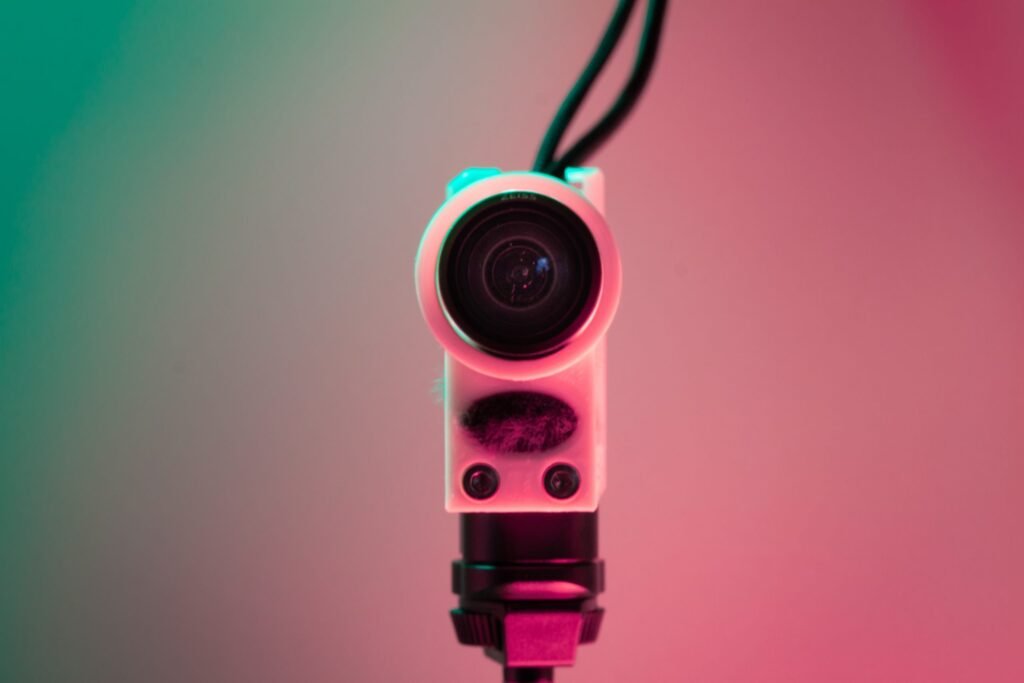
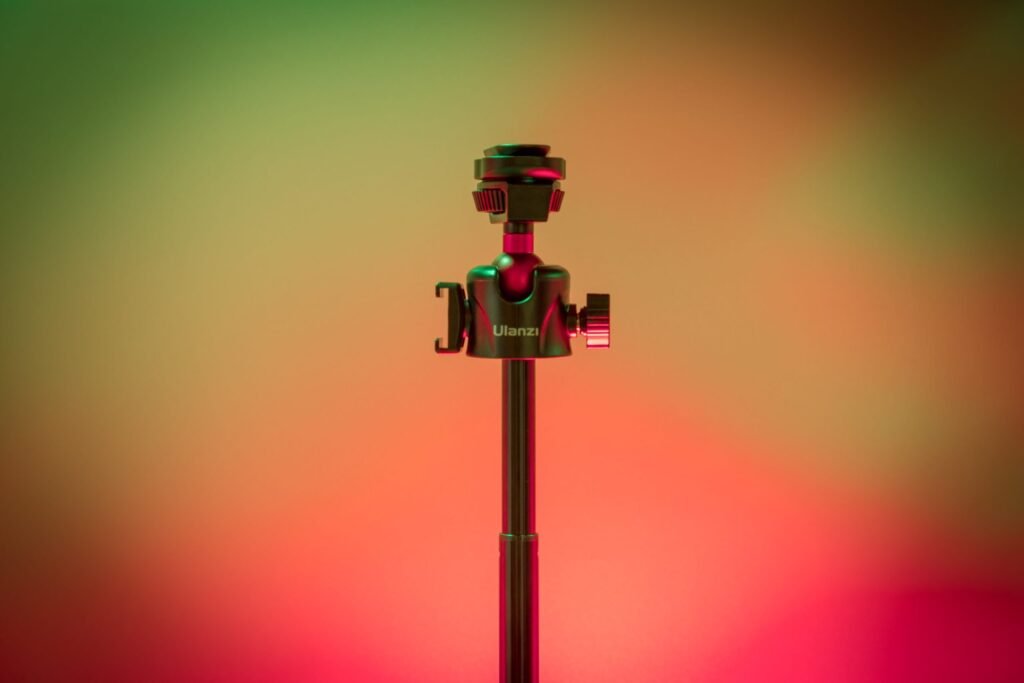
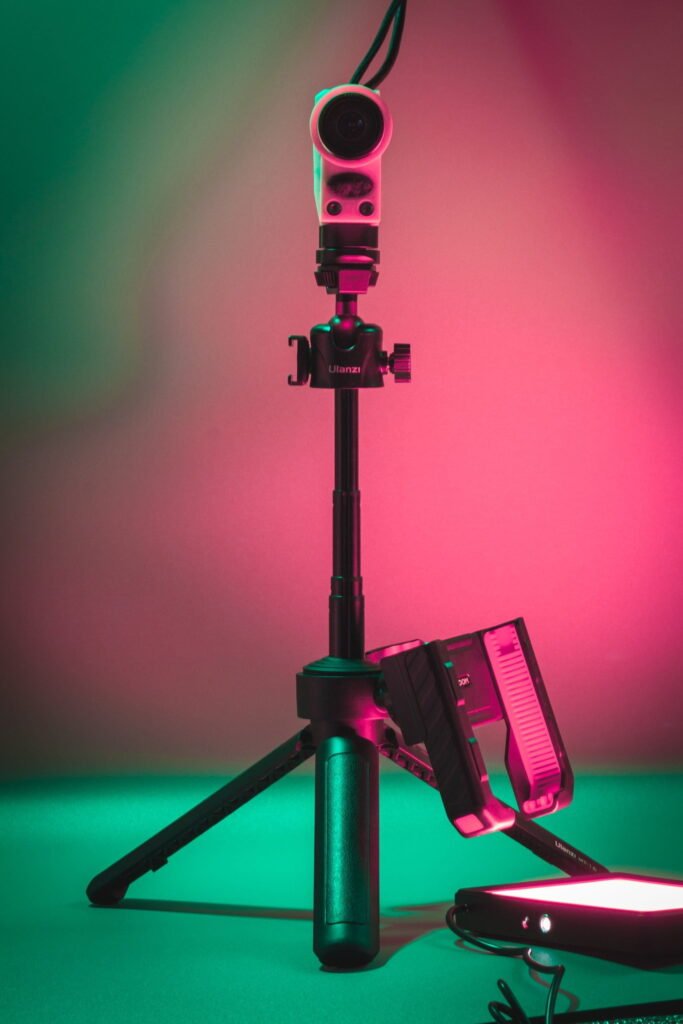
Target Use Cases and Usability
The AntiScuff backpack is aimed at a variety of IRL ( “In Real Life” ) streaming use cases, essentially any scenario where one wants to broadcast live video away from a traditional studio. The most common users are individual content creators on platforms like Twitch, YouTube, Facebook Live, or newer services like Kick, who produce IRL content. This can range from travel vloggers who stream their journeys around different cities and countries, to outdoor adventurers who might live broadcast hikes, camping, or road trips. Because the setup is portable and weatherproof, travel streamers find it invaluable – they can take their audience virtually along to famous landmarks, street markets, beaches, or even through extreme conditions, all while maintaining a high-quality stream.
Another major use case is streaming live events and conventions. For example, a streamer attending a gaming convention or tech expo can use the backpack to walk the show floor, interview people, and give tours of the event in real time. Traditional setups would require a big camera crew or be limited to Wi-Fi areas, but with an IRL backpack, it’s as free-roaming as a personal livestream. Similarly, community meetups, festivals, concerts (with permission), or even behind-the-scenes at esports tournaments are possible content ideas that the backpack enables.
For gaming-related events, some streamers even use IRL backpacks to provide live coverage of things like Pokemon GO outings, geocaching adventures, or IRL challenges. The low latency and reliable connection mean they can interact with chat while on the move, making viewers feel truly present. It’s also useful for journalism and broadcasting on the go – independent journalists or small media teams can use such a backpack to go live from the field (for instance, covering a protest, doing a live interview on the street, or reporting from a remote location) without needing a satellite truck or expensive news crew gear. The video quality and bonding tech are approaching professional broadcast level, which broadens the potential user base beyond just hobbyist streamers.
Usability for the end user – the streamer – is designed to be as simple as possible. AntiScuff’s team pre-configures the system so that when you receive the backpack, it’s largely plug-and-play. You charge up the power bank, insert your SIM cards into the modems, mount your camera, and you’re basically ready to start streaming. The learning curve is much gentler than if one were to build a DIY solution from scratch. The inclusion of an OBS cloud server further simplifies operation: you don’t need to carry a laptop or fiddle with software in the field. You can control many aspects remotely or set up automation (like the chat command start/stop). Because the system runs OBS in the cloud or a BELABOX remote interface, streamers can even adjust settings from their phone if needed (for instance, using a web dashboard on their phone to monitor bitrate, or to switch scenes if they have multiple camera feeds).
The reliability of the AntiScuff backpack in actual use is high, given the combination of hardware and cloud support. If one network connection fluctuates, the stream doesn’t drop; the bonded connection just uses the other links more until the first one recovers. The active cooling means even under heavy workload (e.g., streaming at 6000 kbps for hours), the encoder won’t overheat and crash. And should any hardware issue occur, AntiScuff offers a 12-month return-to-base warranty on all the main components, which provides peace of mind to buyers. Essentially, they stand behind the backpack as a complete system, so users don’t have to troubleshoot individual parts with different manufacturers.
Finally, it’s worth noting that while the AntiScuff IRL Backpack is a premium product, it is also somewhat community-driven. The underlying BELABOX software is an open project supported by streamers, and AntiScuff contributes back to that project (a portion of each sale goes as a donation to BELABOX development). This means that by using the backpack, you’re also indirectly supporting open-source tools that benefit the whole IRL streaming community. And if a user ever wants to upgrade or modify the system, they theoretically can, since it’s built on non-proprietary tech – for example, an advanced user could swap in a new single-board computer down the line if technology advances, or add different modems, etc. AntiScuff is also open to helping DIY enthusiasts (their FAQ even encourages people to ask for a parts list on their Discord if they want to try building something themselves). In other words, the product is appealing not only to those who want a turnkey backpack, but also to tech-savvy streamers who like to tinker, because they know the system’s insides are not locked down.
To sum up, AntiScuff’s backpack is suited for anyone needing a mobile live broadcasting rig: solo IRL streamers, travel and outdoors content creators, live event hosts, and even professionals wanting a lighter alternative to a TV broadcast setup. The combination of user-friendly design and advanced streaming capability makes it a versatile choice for bringing a high-quality live stream from virtually any location.
Comparing AntiScuff IRL Streaming Backpack with Competing Solutions
The IRL streaming backpack space has a few other notable players and approaches. It’s useful to compare AntiScuff’s offering with similar products and solutions by Elgato, LiveU, and the well-known “Gunrun” IRL backpack (popularized by streamer Justin “Gunrun” and now offered commercially by UnlimitedIRL). Each solution approaches mobile streaming differently in terms of technology, customization, portability, and performance.
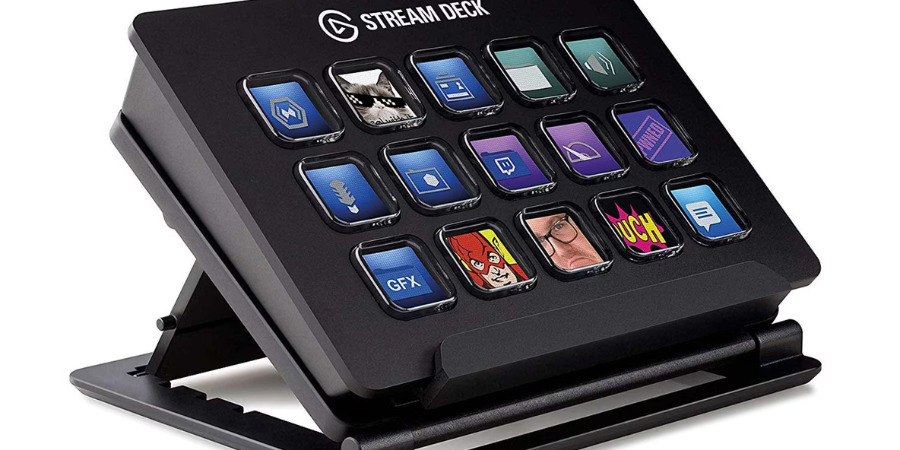
Elgato’s Portable Streaming Gear (DIY Approach)
Elgato, a brand well-known for streaming hardware (like capture cards, webcams, and the Stream Deck), does not sell a dedicated IRL backpack kit. However, many streamers are familiar with Elgato’s products and some have tried to jury-rig portable streaming setups using Elgato devices. For instance, one could use an Elgato Cam Link 4K (a USB HDMI capture card) hooked up to a laptop or a small form-factor PC to capture a camera feed, then use that laptop to stream via whatever internet connection is available. Elgato even showcased a “Go Bag” travel streaming kit concept, which is essentially a well-organized case for packing your streaming gear on the road (things like a Cam Link, a compact lighting setup, maybe a microphone, etc.). But it’s important to note that Elgato’s solution is fundamentally a DIY approach – you’d be assembling components and there’s no built-in cellular bonding or all-in-one integration out of the box.
In terms of technology, an Elgato-based mobile setup would rely on a general-purpose computer (like a gaming laptop, Intel NUC, or other mini PC) to do the video encoding and streaming. That computer would use Elgato capture hardware to get the video from your camera. While Elgato capture cards are high-quality and can handle HD or even 4K input, the system as a whole isn’t optimized specifically for multi-network streaming. You would likely need to use third-party software solutions like Speedify or MJPEG-over-UDP hacks to combine multiple cellular connections on a laptop, or simply stick to one connection (like tethering to a single phone’s hotspot). Customization is quite high in this scenario – you can choose every component (which laptop, which camera, which hotspot or modem, etc.) – but the burden is on the user to make it all work together. In contrast, AntiScuff’s backpack comes pre-integrated with hardware and software tuned for bonding and streaming, so the customization is more about optional add-ons rather than core functionality.
Portability is another area of difference. Carrying a laptop-based rig in a backpack with external cables running to a camera can be cumbersome. Laptops also tend to be heavier and have shorter internal battery life (often requiring their own power bank or a DC inverter to run for many hours). The AntiScuff backpack, on the other hand, runs on a lightweight single-board computer that’s designed to sip power, and the whole system is neatly packed inside a single backpack with mounting points for the camera. There are no loose parts dangling (since everything is secured in compartments). Additionally, the power consumption of an Elgato + laptop combo might be higher than the BELABOX encoder, meaning you’d need more battery to get the same hours of streaming. Many DIY streamers who attempted the laptop route found that you might only get a few hours out of a laptop unless you carry a hefty battery or multiple laptop batteries – which reduces the portability significantly. The AntiScuff’s roughly 6-10 hour duration with a single 20,000 mAh pack is hard for a laptop setup to match without a lot of extra weight.
When it comes to performance, there are pros and cons on both sides. A high-end laptop with a strong CPU/GPU could encode video at very high quality (even 1080p60 or 4K) and you have flexibility to run full OBS, add overlays locally, etc. Elgato’s devices have low latency and excellent video throughput, so the video quality can be excellent. However, without bonded networking, a DIY setup might only stream reliably in areas with strong single-carrier coverage. If that one connection drops, so does the stream. You could attempt to tether multiple phones or USB modems to a laptop and use specialized software to bond, but it’s not as seamless or reliable as dedicated bonding solutions. Meanwhile, the AntiScuff backpack’s performance in the field is very robust due to its bonding and the efficiency of H.265 encoding. It might be limited to 1080p in standard configuration, but that is usually sufficient for live content (few platforms support 4K livestreaming on the go due to bandwidth constraints). Also, the tightly integrated system in AntiScuff’s pack means lower chances of something going wrong – fewer cables that can get jostled, no Windows update suddenly rebooting your laptop mid-stream, etc. From a convenience and reliability standpoint, AntiScuff outshines a DIY Elgato rig. That said, an enthusiast who doesn’t mind extra weight and wants absolute control might still consider an Elgato/laptop kit, especially for scenarios like traveling between hotel setups and on-location shoots where they can set the laptop down. But for true on-foot streaming, a purpose-built backpack like AntiScuff’s is generally much more user-friendly.
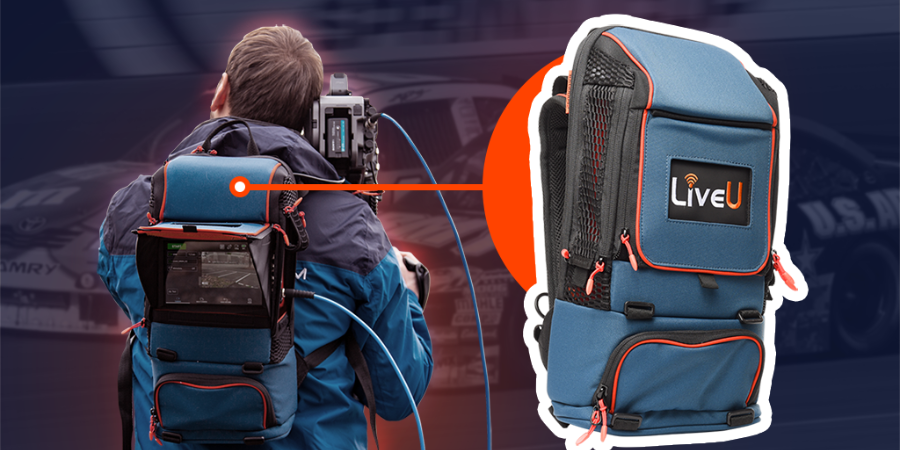
LiveU’s Bonded Streaming Devices
LiveU is the pioneering company in the bonded cellular video transmission space and has been the go-to solution for professional live broadcasts for over a decade. Their products, such as the LiveU Solo and newer LiveU Solo PRO, are often mentioned in the same breath as IRL backpacks because they were among the first reliable ways to do what streamers now do – send live video from anywhere using multiple cellular connections. LiveU’s technology is somewhat analogous to what AntiScuff’s BELABOX does, but it’s proprietary and comes in a dedicated hardware unit.
In terms of technology, LiveU devices use a custom hardware encoder and the company’s LRT (LiveU Reliable Transport) protocol to bond connections. The LiveU Solo, which has been popular with streamers, is a small box that you connect your camera to (via HDMI) and it streams out the video using up to two cellular connections (plus Wi-Fi or Ethernet if available). The newer LiveU Solo PRO expands that capability, supporting up to four USB modems at once (and indeed up to six connections when counting Wi-Fi and wired LAN). The Solo PRO also can handle 4K video input and uses HEVC (H.265) encoding for efficiency, which puts it on par with AntiScuff’s encoder in terms of modern codec support. Essentially, LiveU’s units are very powerful broadcast devices in a compact form. They don’t come with a backpack or camera – they are just the encoder and sometimes a basic carrying pouch. Users typically pair a LiveU with their own camera and batteries. Companies like UnlimitedIRL have built full kits around LiveU (as we’ll discuss with the Gunrun backpack), but LiveU itself provides the core tech.
Customization with LiveU is somewhat limited compared to AntiScuff’s open approach. When you buy a LiveU Solo, you get the encoder box and you’re expected to use LiveU’s services to manage the stream (though you can self-manage to some degree). You don’t have access to the underlying software to tweak settings beyond what LiveU allows, whereas with a BELABOX (Linux-based) you could theoretically get under the hood if you’re experienced. That said, LiveU’s out-of-the-box experience is very user-friendly in its own way: you power it on, press a button, and it starts bonding and streaming to your preset destination. So for a non-technical user, it’s straightforward and doesn’t require understanding the details. AntiScuff’s backpack tries to capture that ease of use as well, by pre-configuring everything, but it’s built on components that a user could source or alter if needed. LiveU is more of a closed system – you wouldn’t swap out parts of a LiveU; it’s a sealed device that either works as is or not at all.
When comparing portability, a single LiveU Solo unit is extremely portable – it weighs around 500 grams (a bit over a pound) and can be worn on a belt or tossed in a bag. On its own, it’s actually more compact than the AntiScuff backpack’s encoder + router + battery assembly. But a fair comparison is to consider what’s needed for a full streaming setup: with LiveU, you will still need a camera mounted somehow, a backpack or harness to hold the battery and modems, and cables running between these. LiveU sells or recommends accessories like a special backpack or belt pouch to hold the device and USB modems securely. In practice, a streamer using LiveU often ends up with a backpack as well – just that it might be a simpler one not containing a PC, but rather containing the LiveU unit, a battery (or two), and the USB modems sticking out. The AntiScuff backpack essentially integrates what a LiveU user would put together piecemeal: it has an equivalent encoder (BELABOX instead of LiveU), slots for modems, and a battery, all neatly built into a custom-cut foam or pocket system inside a bag. So both solutions are portable, but AntiScuff’s might be considered more streamlined since it’s purpose-built for that configuration. One advantage of the AntiScuff in portability for travel is that since it uses commodity batteries (20,000 mAh banks), it’s easy to replace or upgrade them. LiveU devices typically use either NPF-style camera batteries or V-mount batteries (especially the bigger LiveU units used by news crews). Those can be a bit more specialized and expensive, though the Solo can actually run off USB-C power now, which means it could also use power banks. In short, LiveU is highly portable hardware; the difference is more about integration – do you integrate it yourself or do you buy an integrated kit like AntiScuff provides.
From a performance standpoint, LiveU has a strong track record. Its bonding is very effective and the reliability is top-notch, as evidenced by its use in live news, sports, and other professional applications. A LiveU Solo with two modems can maintain a 1080p stream in conditions where a single modem would fail. The Solo PRO with four modems, like AntiScuff’s with multiple modems, offers even more reliability and bandwidth (LiveU advertises up to 20 Mbps uplink using combined connections). AntiScuff’s BELABOX uses a similar principle of bonding (actually using SRT protocol which is analogous to LiveU’s LRT in concept) and also achieves stable streams. One area where differences show is the cloud service: LiveU requires either a paid subscription to their cloud bonding service or running your own server with their protocol to receive the stream. Most Solo users opt for LiveU’s subscription, which can cost a significant monthly fee (especially if it includes data plans for modems). AntiScuff’s solution, by using SRT and OBS in the cloud, might be more cost-effective – after the included 6 months, their cloud service is around $50/month, and you bring your own data plans which could be as cheap or expensive as you choose. To truly compare performance, one could say both systems deliver high-quality video with minimal latency (a second or two latency is common for both). LiveU’s proprietary system is very polished – it has features like automatic cloud transcoding, an online portal to manage streams, etc. AntiScuff’s open approach gives you more manual control via OBS, which some streamers prefer for customization (graphics, alerts, etc., can be added in the cloud OBS just as they would on a home PC).
In terms of raw video quality, both LiveU and the AntiScuff BELABOX support 1080p and use H.265 for better compression efficiency, so one isn’t inherently sending a better image than the other given the same bitrate. The quality of the camera you use will matter more here – and both accept high-end cameras as input. One notable difference is that LiveU Solo PRO explicitly supports SDI input as well (for professional broadcast cameras), whereas AntiScuff’s system is geared to HDMI only (since most consumer cameras use HDMI). That’s only relevant to high-end users, but it indicates LiveU targets both consumer and professional markets, while AntiScuff is squarely focused on streamers and content creators using consumer gear.
Cost and accessibility are factors that tie into this comparison as well. AntiScuff’s backpack aims to be an affordable alternative to a LiveU-based setup. A LiveU Solo device alone costs around $1,000, and that’s without modems, without a camera, and without a battery or bag. The fully kitted “Gunrun” style packages built around LiveU (discussed next) run into several thousand dollars plus ongoing fees. AntiScuff’s complete kit can often come out cheaper for what you get, especially considering you can use your own SIMs and don’t necessarily have a high mandatory monthly cost. However, if a streamer already owns some gear (say they have modems and batteries), buying just a LiveU Solo unit might seem cheaper than re-buying an entire AntiScuff backpack. It depends on the situation.
In summary, LiveU solutions are mature and reliable, with a history in the field, and are a strong benchmark for performance. AntiScuff’s solution was actually built to offer similar capabilities using open tech at a lower price point and with more customization. For an interested buyer, if you want a battle-tested industry solution and don’t mind the expense, LiveU is a viable choice. But if you want to avoid subscriptions and have a more streamer-centric package that is customizable and possibly more bang for your buck, AntiScuff’s offering is very compelling.
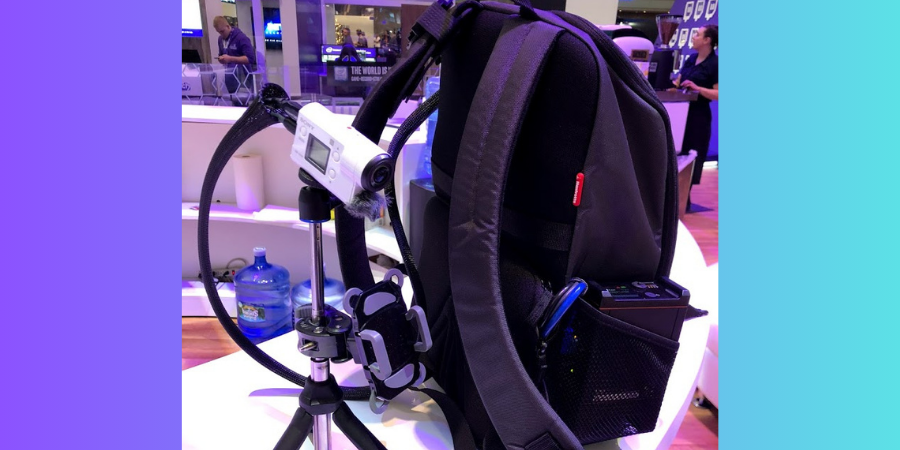
The “Gunrun” IRL Backpack (UnlimitedIRL)
The term “Gunrun IRL Backpack” refers to the famous backpack kit first assembled by Justin “TheGunrun” Kan during the early days of Twitch IRL streaming. That design became the blueprint for many streamers – it typically included a LiveU unit, multiple modems, a camera, and a support structure (selfie stick, battery, etc.). Today, a company called UnlimitedIRL sells an official version of this known as the IRL Backpack v7 (often still nicknamed the Gunrun backpack). This is perhaps the closest direct competitor to what AntiScuff is offering, as it’s also a pre-built backpack tailored for streamers.
What’s in the Gunrun/UnlimitedIRL backpack? The latest iteration (v7) includes a LiveU Solo PRO bonding encoder, a Sony FDR-X3000 action camera, a set of modems (usually two included by default, with an option to have four), a large battery (around 99 Wh, which is just under the typical flight limit), and mounting accessories like a shoulder/chest camera mount and an extendable monopod (selfie stick) – essentially a very similar list of components to the AntiScuff backpack, but built around the LiveU device instead of BELABOX. UnlimitedIRL’s package is pretty deluxe: it arrives ready-to-go with even SIM cards provided as part of their “Solo Connect” program. They often bundle global SIMs and data plans with the backpack, so a buyer can turn it on and start streaming using UnlimitedIRL’s provided cellular service (for a fee, of course). It’s marketed as a one-stop solution, and indeed comes at a premium price (starting around $2,700 or more, depending on options).
In terms of technology and performance, since the UnlimitedIRL backpack uses the LiveU Solo PRO, its capabilities are similar to what we discussed in the LiveU section. It can bond up to 4 cellular modems and supports 4K 30fps streaming with HEVC. The inclusion of the Sony X3000 camera is a commonality with AntiScuff’s recommendations – both identify that camera as a top choice for IRL, due to its optical stabilization and good image quality in a small form factor. The Gunrun pack will stream via LiveU’s LRT to a server (UnlimitedIRL likely has an arrangement or instructions for using LiveU’s portal). AntiScuff’s pack, using BELABOX, streams via SRT to their OBS cloud. In practice, viewers would be hard-pressed to tell a difference in the end broadcast between the two, assuming both are using robust connections. Both can achieve a stable 6-8 Mbps 1080p stream in difficult network conditions by bonding multiple signals.
When comparing portability and design, the AntiScuff and Gunrun backpacks share a lot of philosophy: keep the gear protected and as lightweight as possible while maximizing comfort. The UnlimitedIRL v7 IRL backpack is also weather-resistant and built for long wear. It uses a tactical-style or camera backpack with compartments for the LiveU and battery. Both have external mounts for the camera and phone. AntiScuff’s pack has the custom cooling system inside, whereas the LiveU device in the Gunrun pack is passively cooled (LiveU units are designed to handle heat on their own, but they may run warm). The weight of both backpacks with all gear is in a similar ballpark (a few kilograms). The AntiScuff might be slightly lighter if configured with fewer batteries or modems, but if both are fully loaded (multiple modems, heavy battery), they’re comparable. One slight difference: UnlimitedIRL ships their kit with a 99 Wh high-capacity battery (often an NP-F or V-mount style brick) which is a bit heavier but offers a lot of power. AntiScuff’s default 20,000 mAh (74 Wh) power bank is smaller; you could add a second to get equivalent total Wh. Depending on preferences, one big battery vs multiple smaller ones can affect how weight is distributed (multiple smaller ones can be placed in different pockets vs one big one in one spot). These are minor nuances – both packs have taken into account the need to meet airline regulations and provide hours of power.
Customization and flexibility is an interesting differentiator. With the Gunrun/UnlimitedIRL backpack, you are buying a fixed kit. You can choose maybe how many modems (2 or 4) when ordering, but the components are decided for you: you will get that specific camera, that specific battery, those specific modems (often they use their “Solo Connect” modems which are basically unlocked USB modems with pre-provisioned SIMs). Some users might like that simplicity – everything is sourced and tested to work together. AntiScuff’s approach is a bit more flexible: you could choose not to buy a camera from them (use your own), or not buy modems from them (maybe you already have some USB sticks or a preferred model). You can add extra bits like a different length selfie stick or a rain cover. Essentially, AntiScuff leaves a few more choices to the user, whereas UnlimitedIRL’s kit is highly standardized. If a part of the Gunrun backpack fails, typically you’d go through their support to replace it (since it’s all under their package warranty). If a part of AntiScuff’s fails, you also have warranty, but theoretically you could also substitute with an off-the-shelf component in a pinch (since BELABOX software can run on multiple hardware boards, or a generic power bank could replace the INIU, etc.).
One area where UnlimitedIRL’s solution might have an edge is that it’s field-proven by top streamers. They often cite that major IRL content creators (some of the biggest Twitch streamers who do outdoor content) have used their backpack – names like JakeNBake, HasanAbi, etc. It’s a product that has been validated in countless real-world scenarios from busy urban environments to remote travels. AntiScuff’s backpack is newer on the market (and AntiScuff as a company is more known in the EU region for their cloud services initially), so it doesn’t yet have the same level of high-profile usage, though it draws from the experience of the BELABOX community which has also been testing in the wild for years. For a buyer, knowing that the “Gunrun” backpack has worked for very demanding users could be reassuring. On the other hand, AntiScuff’s solution being newer doesn’t mean it’s unproven – it uses technology that many streamers have DIYed with success. It’s more about the branding and support ecosystem around it.
Performance differences between the two might be subtle. One potential difference is how each handles multi-platform streaming or overlays. The UnlimitedIRL/Gunrun backpack using LiveU would typically feed into the streamer’s own setup or a service when they want overlays. If a streamer wants alerts/graphics on a LiveU stream, they might run a local or cloud OBS and use the LiveU as a source input (similar to AntiScuff’s method). UnlimitedIRL’s site mentions a partnership with IRLToolkit (a web-based overlay system) for adding alerts and overlays on the fly. AntiScuff includes the cloud OBS which can do even more in terms of production (since it’s a full OBS instance). So, for a streamer who cares about customizing the look of the stream with graphics or wants to stream to multiple platforms at once, AntiScuff’s integrated OBS cloud might provide an easier solution. With the Gunrun pack, one might need to incorporate a third-party multi-stream service or additional software, unless they also use a cloud PC. It’s a bit technical, but essentially AntiScuff’s package is marrying the backpack hardware with the streaming software side nicely.
When it comes to cost, as touched on, the AntiScuff backpack aims to be more affordable. An example rough comparison: AntiScuff base price $1250 (no camera, one battery, no modems). Add a Sony X3000 camera ($400), two modems ($200), and perhaps another battery, you might end up around $1900-$2000 total. The Gunrun UnlimitedIRL backpack with camera and two modems is about $2695 (as advertised), and that includes some things like the first month of data maybe. Over time, the difference can grow because UnlimitedIRL’s solution expects you to either pay for their data plans or manage your own SIMs separately. If you use their “Solo Connect” (which is modems + SIM + data), that can be several hundred dollars per month for unlimited global data and the LRT service. AntiScuff doesn’t have a mandatory monthly cost aside from whatever data SIMs you choose (and their optional cloud OBS after the free period, if you choose to continue it). So for a streamer on a budget, AntiScuff can be significantly more economical to operate.
In summary, the Gunrun IRL backpack by UnlimitedIRL is a high-end, turnkey solution with a pedigree in the streaming world. It offers very similar capabilities to AntiScuff’s backpack since both leverage multiple cellular connections, good cameras, and ergonomic designs. AntiScuff’s key differentiators are its use of open technology (BELABOX), its slightly lower cost and choose-your-own-adventure configuration, and its integration with a cloud OBS service for customization. The Gunrun backpack’s differentiators are the use of LiveU’s industry-grade hardware, a longer history of usage by well-known streamers, and the convenience (for those willing to pay) of including global data service so you literally don’t have to worry about buying SIM cards wherever you go.
Conclusion
All these IRL backpack solutions – AntiScuff’s backpack, a DIY Elgato-based setup, LiveU devices, and the Gunrun UnlimitedIRL kit – share the same goal: enabling high-quality live video broadcasting from anywhere. AntiScuff’s offering stands out as a balanced and modern solution tailored to independent streamers. It provides the reliability of bonded connections and high-efficiency encoding in a user-friendly package, while remaining customizable and relatively affordable. The design’s emphasis on comfort and durability means it can be a daily workhorse for a traveling streamer.
Compared to rolling your own solution with general-purpose gear (as one might with Elgato hardware), AntiScuff’s backpack drastically simplifies the process and improves portability, albeit with less freedom to choose every component. Against the legacy giant LiveU, AntiScuff holds its own in technical prowess, delivering similar streaming quality without locking users into expensive ecosystems – it’s essentially the community-driven answer to proprietary systems. And when matched against the well-known Gunrun backpack, AntiScuff proves to be a compelling alternative, offering equivalent core features and performance, with different trade-offs in cost and tech openness versus the polished, all-included premium kit from UnlimitedIRL.
Ultimately, interested buyers or tech-savvy users should consider their priorities: If plug-and-play simplicity and support from a long-established solution are paramount (and budget is less of an issue), a LiveU-based backpack like the Gunrun kit could appeal. If maximum flexibility or leveraging existing equipment is the goal, one might experiment with a DIY setup or an Elgato-based approach. But for most streamers seeking a turnkey yet customizable option that embraces the latest open technology, AntiScuff’s IRL Backpack is an excellent choice. It brings professional-grade live broadcasting capability into a portable, one-bag setup, lowering the barrier to entry for streaming one’s world live to the internet. With its neutral, informative stance on technology and robust feature set, the AntiScuff backpack exemplifies the evolving landscape of IRL streaming gear – where innovation, community collaboration, and user-centric design come together to make live content creation more accessible and reliable than ever.

